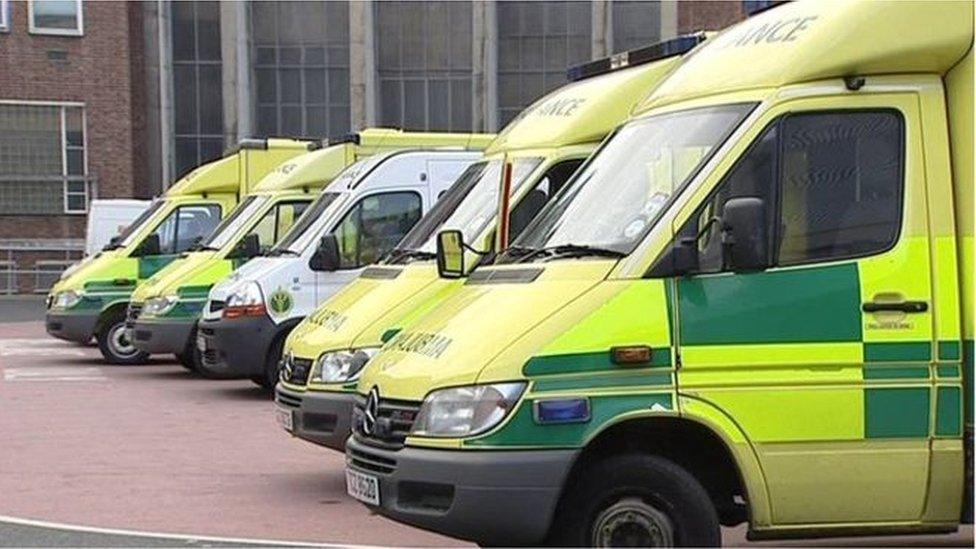'Life-threatening' ambulance call-outs taking longer
- Published
- comments
Recording of a 999 call where a woman calls for help getting home from a hospital appointment
The highest priority ambulance call-outs in Northern Ireland are taking longer to arrive than three years ago.
On average, patients whose conditions are classed as being life-threatening, waited nearly three minutes more in 2015-16 than they did in 2013-14.
Average waiting times rose from 7.15 minutes to 10.17 minutes.
The NI Ambulance Service said its target of eight minutes was being missed because of the outdated system for categorising calls.
The longest average waiting time was in the South Eastern Trust area, where patients had to wait 11.30 minutes.
The information was contained in a Freedom of Information request by the BBC into ambulance response and waiting times across the UK.
999 calls are separated into three categories by the NI ambulance service, external:

The NI Ambulance Service (NIAS) said it was not meeting its target waiting time because of a problem in how those calls were broken down into each category.
It said some category A calls were being miscategorised under the current system, and should instead be treated as serious but not life-threatening incidents.
Recording of a 999 call where a woman calls for help after losing her bank card
Brian McNeill, the director of operations at the Northern Ireland Ambulance Service, said they are advocating a change to the system which is much needed.
"Demand has increased 23% from the last time we met the target which was 2012," he said.
"Our staff are working way beyond what we should require of them, without breaks and late finishes and we feel that the changes as to how we define the immediately life-threatening conditions will be positive."
NI Ambulance said the way calls are prioritised and their targets set was established in 1974 and has not kept up with current medical practices.
The Welsh ambulance service introduced a new system in October 2015 which saw a tenfold reduction in the number of calls classed as an emergency, and enabled it to reach the most serious cases quicker.
This ambulance response programme is also up and running in England, and the NIAS says it wants to bring in a similar system.
Paramedic Jacqueline O'Neill
In the meantime, it is operating a number of systems whereby not every call to a paramedic would require a hospital admission but could offer, for example, advice from a clinician.
The NIAS says that, along with rising population figures, it also has to cope with increasing demand.
The percentage of calls that waited more than 12 minutes for a response increased from 17% in 2013-14 to more than 27% in 2015-16.

Northern Ireland Ambulance Service waiting times for category A calls - the most serious calls, where there is, potentially, an immediate threat to life.

One area where Northern Ireland appears to be doing better than the rest of the UK is the time spent waiting to hand over patients at emergency departments.
In 2013-14, the NIAS spent 16,719 hours waiting on hospitals to take their patients. This dropped to 14,928 in 2015-16.
The NIAS has a workforce of 1,287 and while overall demand on the service has increased, so have staff sickness levels, going up from just under 9% in 2013-14 to more than 10% in 2015-16.
- Published30 November 2016

- Published30 November 2016

- Published30 November 2016

- Published30 November 2016

- Published30 November 2016

- Published6 July 2016

- Published4 July 2016
